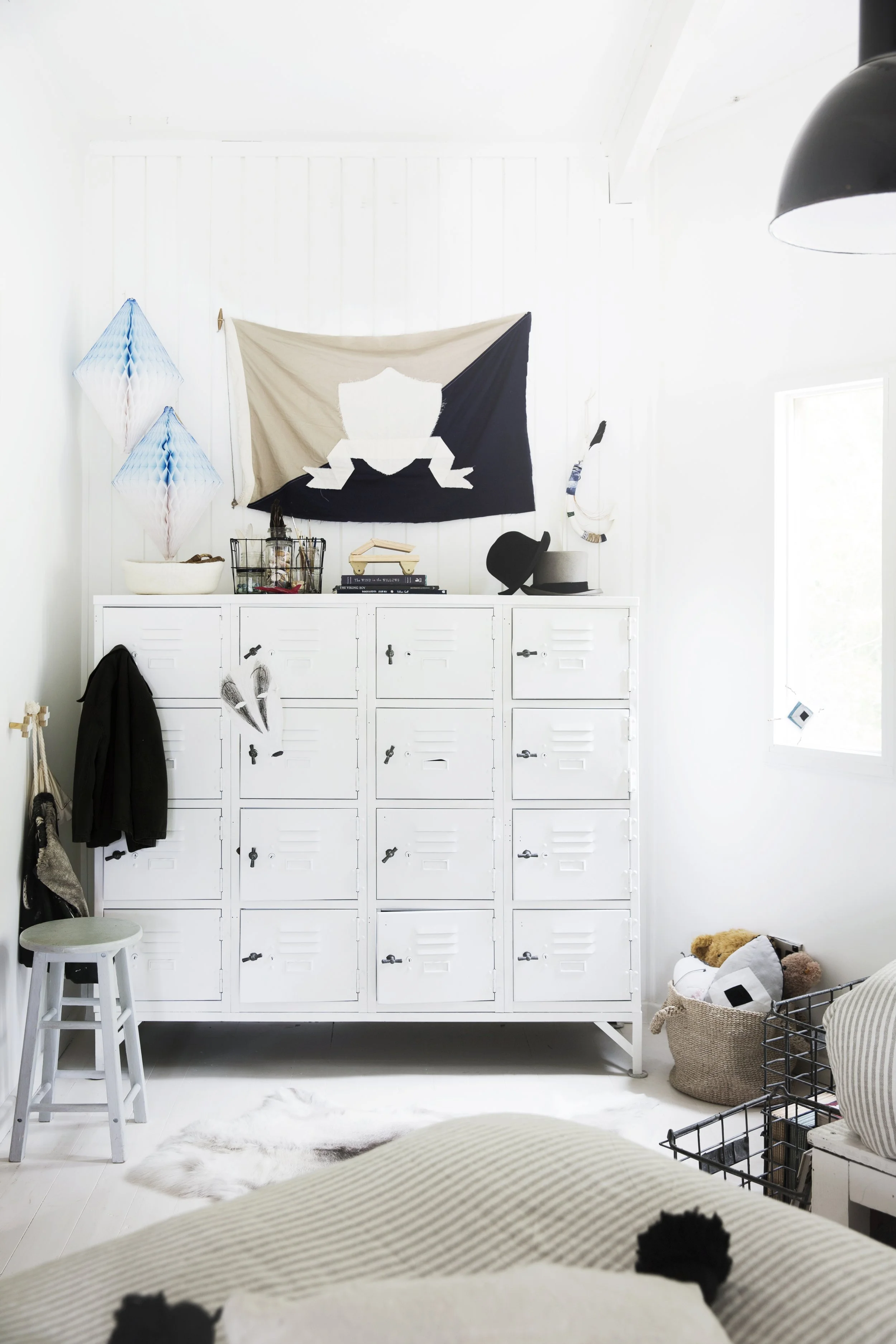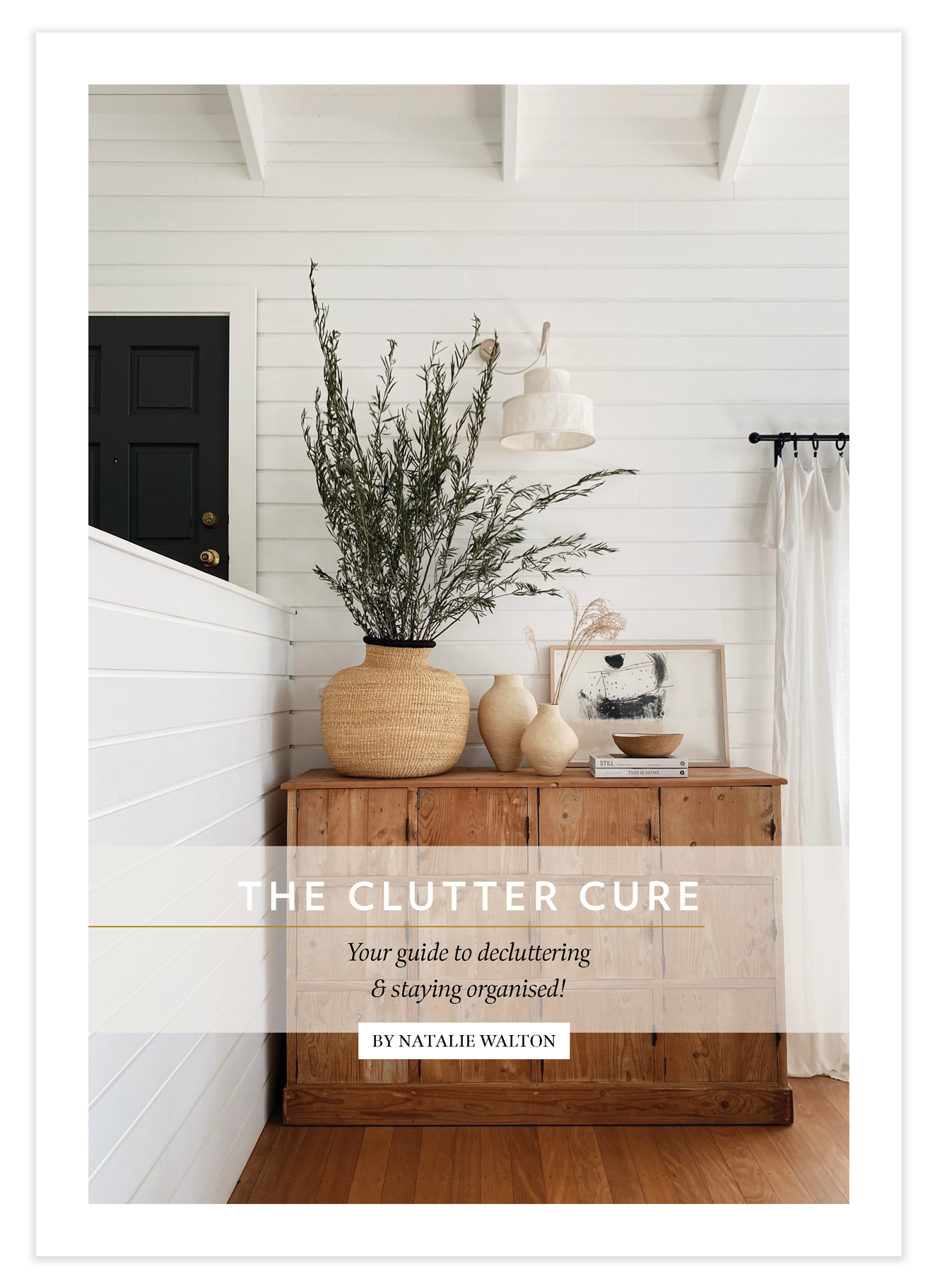Decluttering with Children
One of the biggest sources of frustration when it comes to keeping a family home clean and tidy is… children. Yes, we love them. And, no, we don’t want to impede their creativity or passion for their projects. But how do we find a way to keep our home feeling calm and ordered with little — and not-so-little — ones around?
A few times a year I have a deep declutter with each of my four children. Usually these sessions coincide with the end of a school term, when completed notebooks and projects are brought home. If we’re not careful about what comes into our home, and what we choose to keep, we can soon end up with cupboards full of school work that never gets looked at again. It’s easy to get caught up in holding onto them ‘just in case’ we want to look back with nostalgia one day. But is that what you really want? And do you have the space to store 12 years of projects, notebooks, artworks for each of your children? What are we really trying to hold onto?
So much of what holds us back when it comes to the clutter in our home are our emotions. We make objects mean so much. And that can be a good thing, at times. It’s important to have a home that is filled with pieces that we love and are meaningful. But, quite simply, we can’t hold onto everything.
At some point we have to edit our collections. We have to decide what keep and what we choose to let go. And it’s not always easy.
Get Clarity
The same principles apply when you're decluttering your kitchen as when you are clearing out your children’s rooms. You need to be clear on what you value, and what you want your life to look like.
What type of home do you want to live in? Do you want a place that is organised and runs smoothly, and enables you to focus on the best parts of life — having more time to spend with your children in an engaged way, being able to pack up easily and go on a weekend trip or holiday, or having friends over more regularly to create deeper connections with those in your community.
Take the time to visualise how you want your home to look and feel. Check your children’s rooms against the goals you have for your home and life. Making an assessment of your spaces helps you to get clear on what improvements you need to make, and also allows you to have focus as you declutter your collections.
Take Responsibility
When it comes to decluttering with children, it’s important to remember that they see you. Children are great mimics. They model the behaviour of those around them. Take a look at what you’re modelling. Are you tidying up after yourself? What does your bedroom look like? Do you prepare ahead of time? Or are you always in a rush and flap?
Make sure that you are setting a good example for your children. They notice everything! I have seen this time and time again with my own children. They know what I value. They show me when they have made their bed nicely, and packed away all their things. They want my approval because they are clear on what I value. Sure, sometimes they don’t want me in their rooms because they know I won’t approve. But that’s good too — they are clear on what’s important in our home. And the older they get, the more I can see how this foundation is helping them.
Establish Daily Rhythms
One of the biggest lessons I’ve learnt about children over the years — through first-hand experience, observing how teachers run their classrooms and through research — is that children thrive on rhythms. They feel safe and secure when they know what to expect and what is expected of them. And when there is a consistent rhythm, they are able to move in accordance with it almost without thinking. It becomes second nature.
If you have children who have attended pre-school you will know how this works. When children arrive they know where to put their bags, lunch boxes and drink bottles. There is a system and a process. It is made simple for them to understand, and easy for them to execute — everything is within reach, and clear to follow. There is a name tag or an animal sticker that they can identify. The teachers don’t overcomplicate the process.
And they are clear on their boundaries too. If the children don’t follow the system, they can’t go inside — or start playing at the craft table. In this type of environment everyone thrives. There is more time for play and the fun stuff. That’s what we need to replicate at home.
We don’t need to shout or get frustrated. We just need to create clear systems and rhythms so that everyone can thrive.
FREE DOWNLOAD: THE CLUTTER CURE
Kickstart your simplifying journey with my FREE 15-minute guide to decluttering your home and staying organised.


